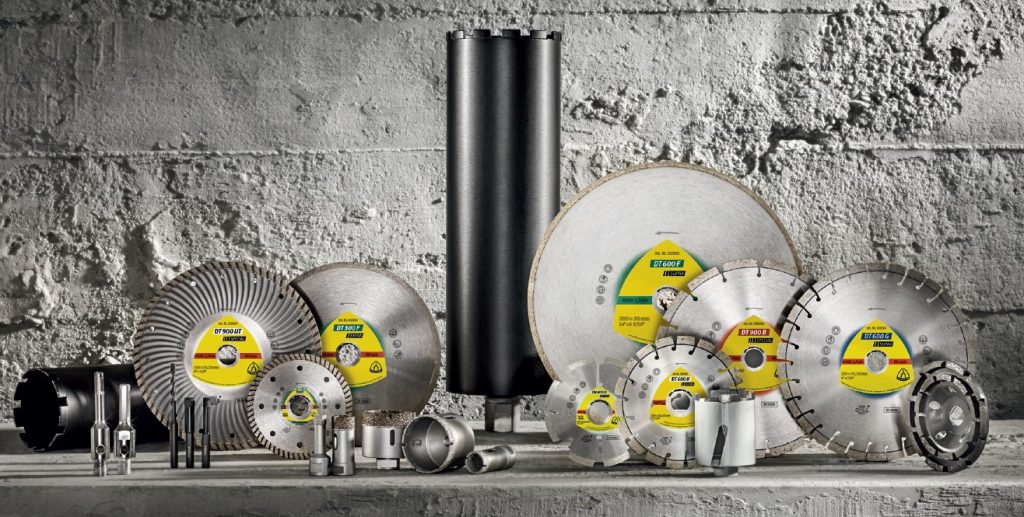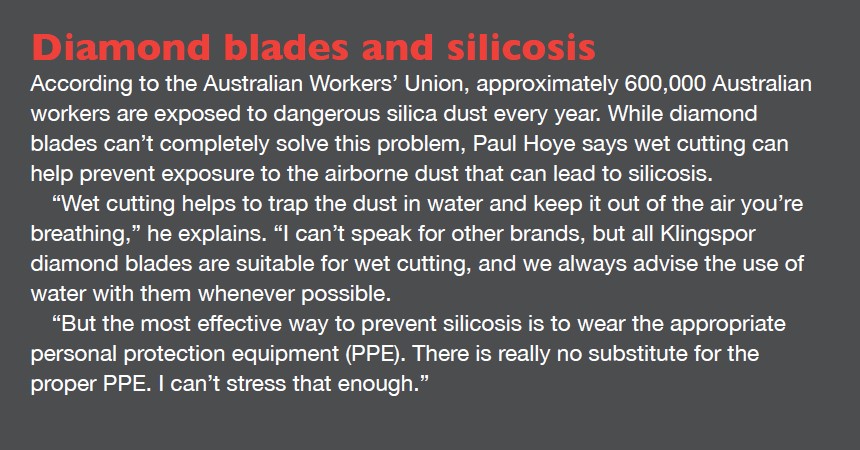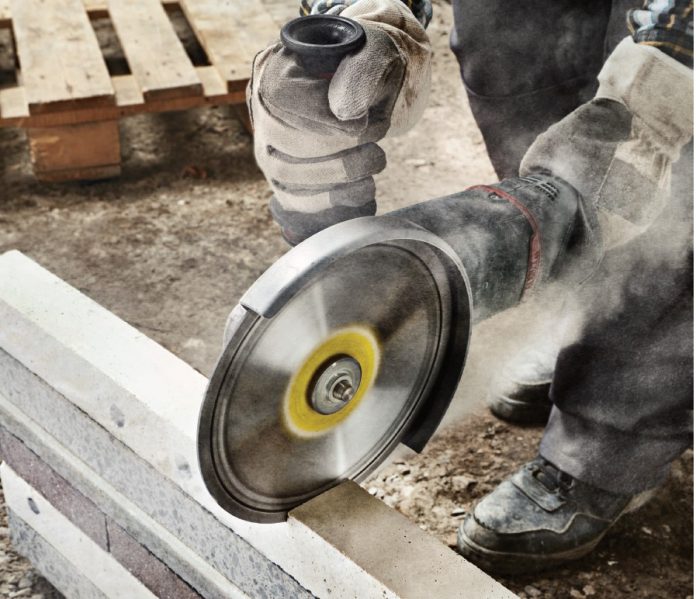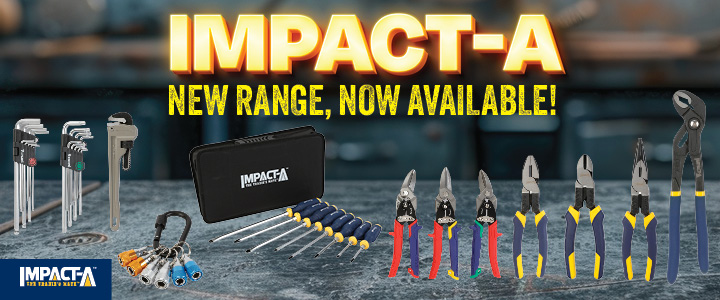A good diamond blade can make easy work of the toughest cutting job. But choosing the right one for the task at hand requires some inside knowledge. That’s because not all diamond blades are created equal.
“Diamond blades pretty much all look the same, but there are some very cheap and nasty blades out there,” says Paul Hoye, managing director Asia Pacific at Klingspor. “At the end of the day, it’s like most things. You get what you pay for.”
ROCKS AND DIAMONDS
Hoye explains that some diamond blades are not actually diamond blades at all.
Rather, they contain silicon carbide that typically doesn’t perform as well or last as long as the real thing.
“A good rule of thumb is to make sure any diamond blade you buy has an oSa (Organization for the Safety of Abrasives) logo printed on it,” Hoye advises.
“This is the world-recognised standard, and means that the blades are made to certain quality standards, are batch tested, and the manufacturer carries global product liability insurance. That means if something goes wrong with the blade, the user is covered.”
LASER WELD VS SINTERED
All Klingspor diamond blades are oSa certified. But that’s really only the first step in choosing a quality blade. Hoye warns that oSa standards don’t distinguish between laser-welded and sintered blades.
For laser-welded blades, a laser is used to melt the diamond cutting segments to the steel core of the wheel. For sintered blades, the diamond segments are chemically bonded to the steel core. This distinction has a big impact on the performance and longevity of the blade.
“Always go for laser-welded blades,” says Hoye. “With laser-welded blades you can typically use the entire width of the diamond cutting segment. However with sintered blades, you can only use up to where the diamond edge meets the steel core.
“So, for example, if you take a 12mm laser-welded blade, you’re going to be able to use the full 12mm width of the diamond segments. But, with a 12mm sintered blade, you might only be able to use 6mm of the diamond width before you hit the steel core.”
Part of the challenge of selecting a quality diamond blade is that it’s not always possible to visually tell the difference between a laser-welded blade and a sintered blade.
“That’s because some manufacturers paint the wheel right up to the edge of the segment so you can’t see whether there’s a laser weld burn or whether it’s just sintered on. You really need to ask the manufacturer, and find a brand you can trust.”

THE RIGHT TOOL FOR THE JOB
Hoye says it’s a common misconception that the wrong diamond blade won’t cut.
“Diamond blades will cut anything and everything,” he says. “However, the wrong blade for the job will probably cut slower and not last as long. So it just comes down to choosing the best blade for the application.”
There are three main diamond blade types typically used in Australia—segmented blades, continuous rim blades, and turbo blades.
“The basic rule of thumb is that segmented blades are for heavy construction materials like bricks and pavers. Continuous rim blades are for
smooth cutting like tiles. And turbo blades do both,” Hoye explains.
“So if you’re a general tradie and you want a diamond blade that you can cut everything with, go for a turbo blade. If you’re a bricklayer, go for a segmented blade. And if you’re a tiler don’t touch either of those—go for a continuous rim.”







